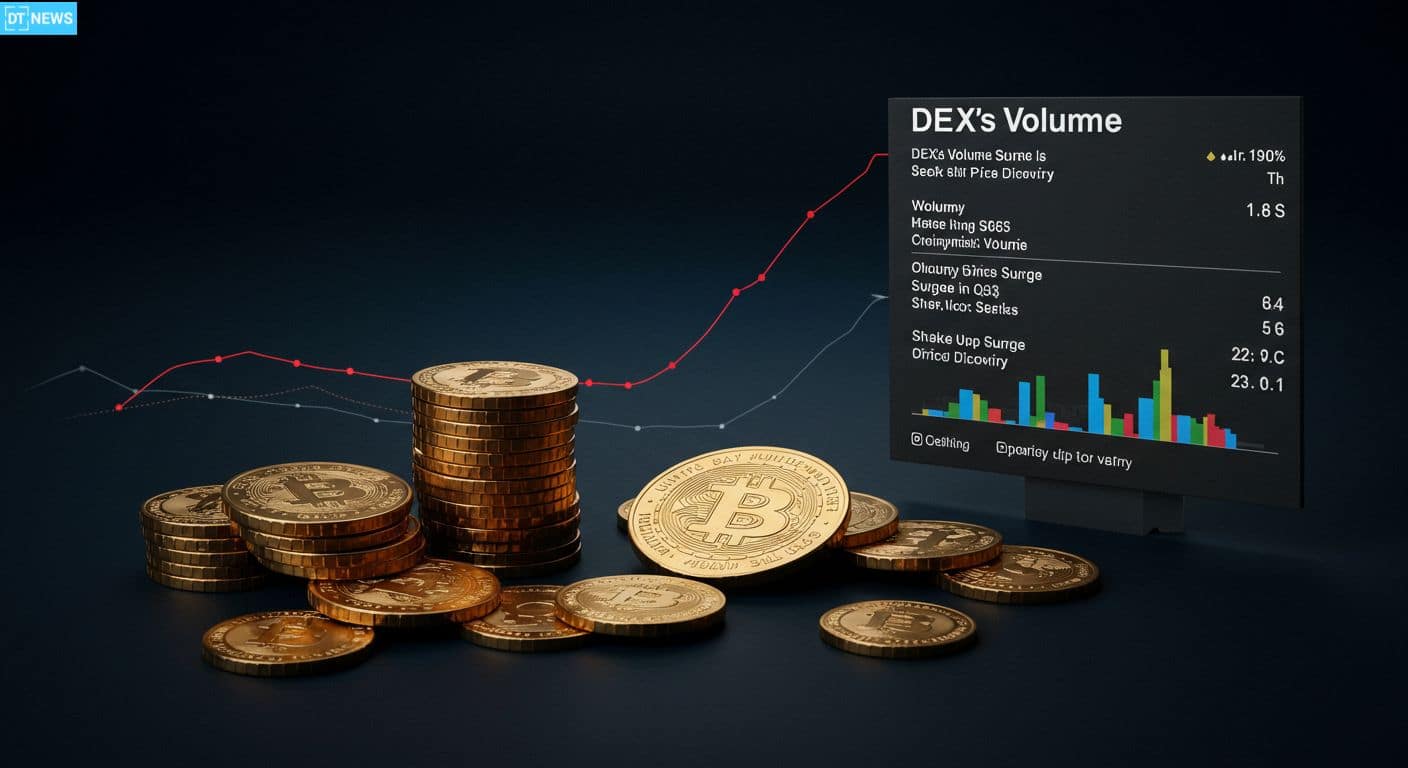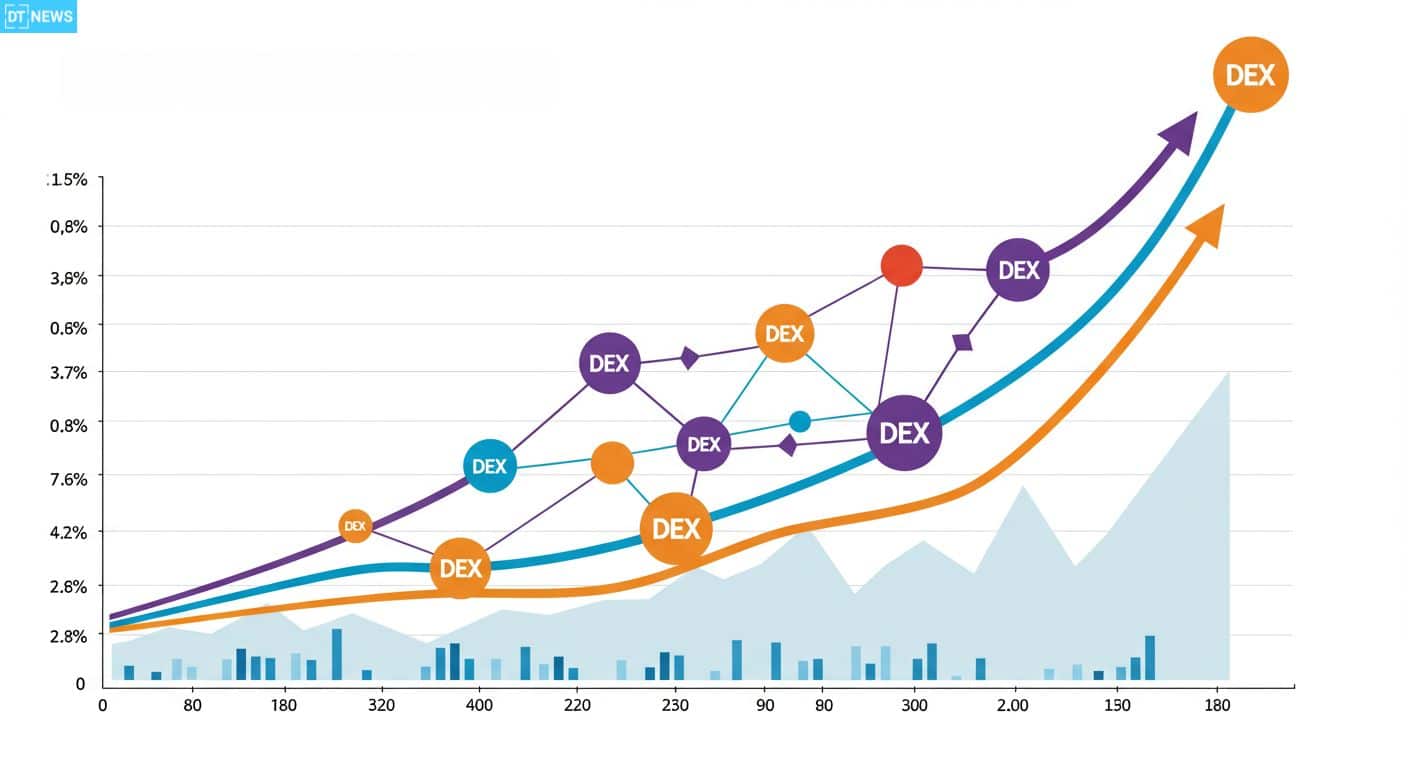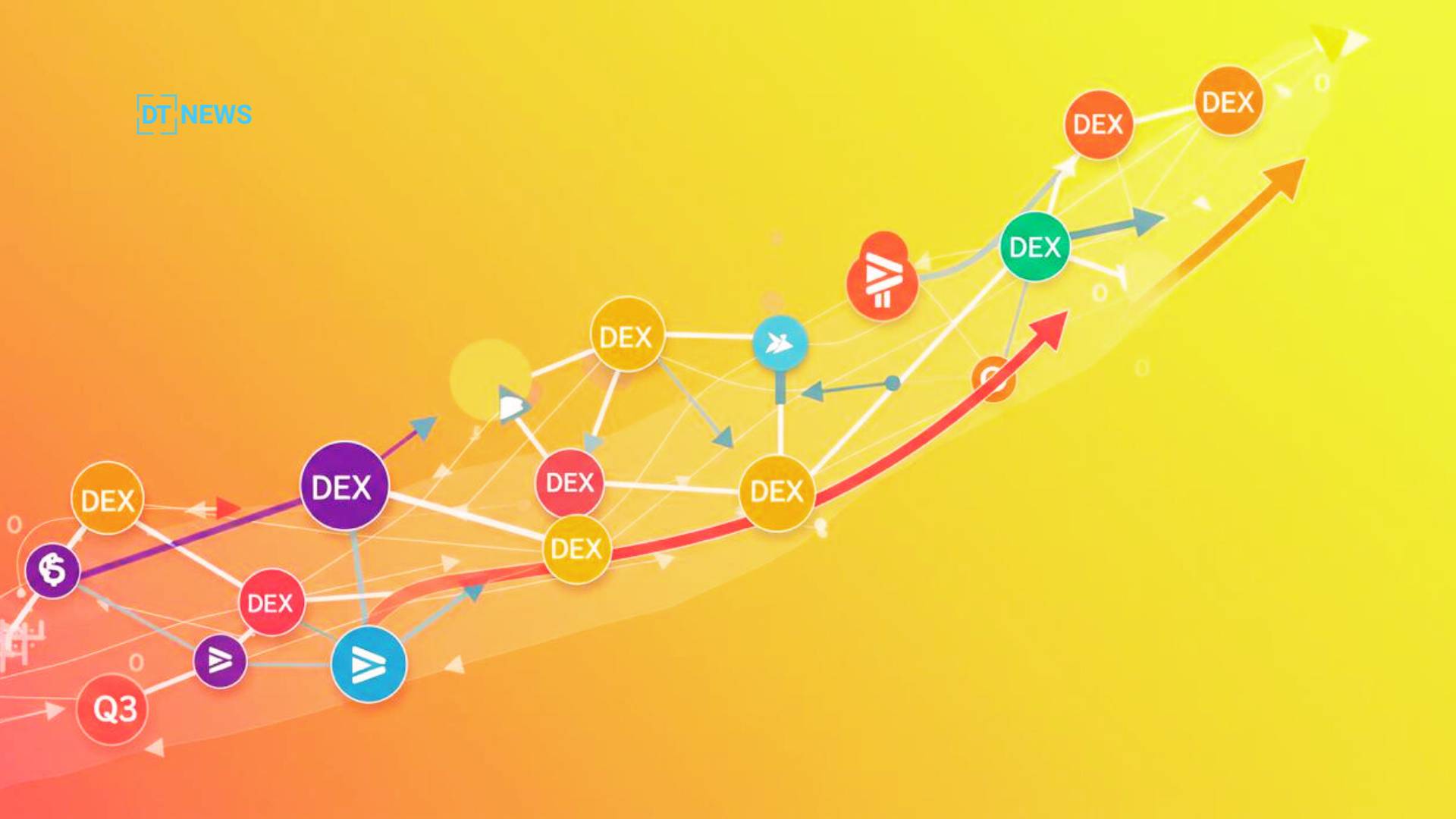According to the latest industry reports, Decentralized exchanges (DEXs) smashed records in Q3 2025 with $1.43 trillion in spot trading volume. That’s 43.6% more than Q2’s $1 trillion and beats the previous high of $1.2 trillion. Additionally, DEXs also captured 17.7% of total spot traffic vs centralized exchanges, the strongest yet.
This means not only is on-chain trading growing in size, but the mechanics of price formation and liquidity are changing.
Record DEX Volume: Numbers and Context
The $1.43 trillion in spot volume in Q3 2025 is the highest quarterly total ever for DEXs. Monthly leaders in that quarter were the months of August ($510.5 billion) and September ($499.1 billion), 2nd and 3rd highest monthly volumes ever. DEXs now account for 17.7% of spot volume compared to centralized exchanges, going up from prior quarters and previous records.

To put this in perspective; if DEXs continue to take more share, they could impact token pricing, liquidity distribution and trading strategy across the crypto ecosystem.
Also read: Why CZ Thinks a Dark Pool DEX Is What DeFi Needs Now
Evolving Price Discovery: DEXs vs CEXs
Market watchers have noted that DEXs are becoming primary price discovery venues, while centralized exchanges are acting as exit liquidity points. Analyst Ignas had argued that tokens listed first on DEXs often set their price before centralized listing, with CEXs absorbing the downward pressure post-listing.
He noted that several tokens, including CAT and ME, dropped 70% after listing on Binance, reflecting this dynamic.
This upends the traditional model where centralized order books were the price formation hub. Currently, AMM curves, on-chain auctions, and liquidity pool algorithms are mediating price signals and volatility.
Top Chains and DEX Volume Drivers
Solana is the clear leader among chains for DEX volume. In Q3, Solana’s DEX volume was $326 billion, up 21% from Q2. Its growth is in contrast to other chains that are slowing down, showing Solana’s role in the decentralized finance flow.
DEX aggregators, cross-chain bridges and efficient protocols have also enabled liquidity to move across networks, so traders can find the best route and arbitrage. The increasing volume means better infrastructure, deeper liquidity and smoother cross-chain execution.
Infrastructure and Market Design
The rise of DEX volume means there’s need to rethink market infrastructure. As trading moves on-chain, oracle design, price indexing and liquidity routing become more important. With DEXs setting more ticks, index providers, market makers and regulators need to trust on-chain data as source of truth.
Moreover, security, contract efficiency, gas optimization and protocol risk management become more critical because more value and volume live in smart contract systems.

A recent study found that between August 2023 and March 2025, $233.8 million was extracted by CEX-DEX arbitrage searchers, with 19 actors capturing 3/4 of the profits. This formalizes the economic pressure as DEX and CEX markets interoperate more tightly.
This record DEX volume changes market power dynamics: token projects and DeFi ventures must now consider DEX liquidity as a primary strategy, not a secondary channel.
Also read: Solana vs Ethereum: How DEXs Turning the Tide in 2025
Conclusion
Based on the latest research; $1.43 trillion in spot DEX volume in Q3 2025 is quite a big deal. With DEXs taking almost 1/5 of spot trading share, the locus of price discovery is moving on-chain.
Solana’s $326 billion and improved infrastructure show how networks and protocols are now competing to host liquidity and influence price paths. As DEXs grow in importance, trading strategy, market infrastructure, and regulatory frameworks must adapt.
For in-depth analysis and the latest trends in the crypto space; our platform offers expert content regularly.
Summary
DEXs hit a record $1.43 trillion in Q3 spot volume, up 43.6% quarter-on-quarter and 17.7% of total spot volume. The numbers suggest DEXs are becoming the primary venues of price discovery, so infrastructure, trading strategy and market roles must change.
Glossary
DEX (Decentralized Exchange) – A platform for peer-to-peer trading via smart contracts; no central custody.
Spot volume – Total value of transactions settling immediately (not derivative or leveraged) in a timeframe.
AMM (Automated Market Maker) – A liquidity pool algorithm that prices assets based on reserve ratios, no order books.
Arbitrage / MEV – Exploiting price differences between markets; MEV is value extractable by block proposers/validators.
Price discovery – Mechanism by which markets determine the tradeable price of an asset.
Frequently Asked Questions About Record DEX Volume
Why is $1.43 trillion DEX volume big?
It’s the highest quarterly volume ever for DEXs.
How much of the spot market do DEXs now take?
In Q3, DEXs took 17.7 % of total spot volume compared to CEXs.
Do CEXs matter now?
CEXs are still important for exit liquidity, large orders and regulatory frameworks. The trend is where price formation happens, not the extinction of CEXs.
Which blockchains had the most DEX volume recently?
Solana led in Q3 with $326 billion in DEX volume, up 21% from Q2.



















































































































